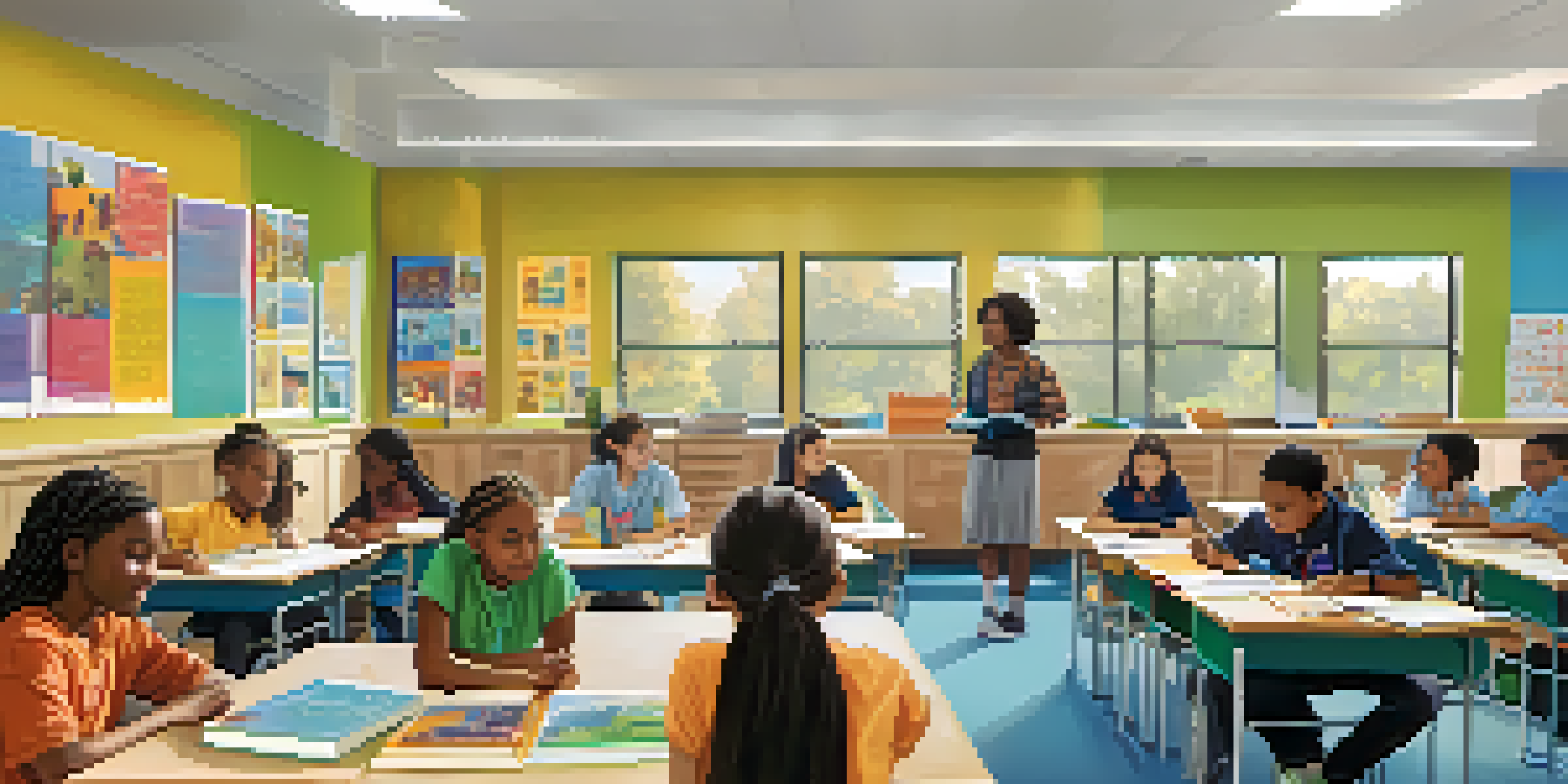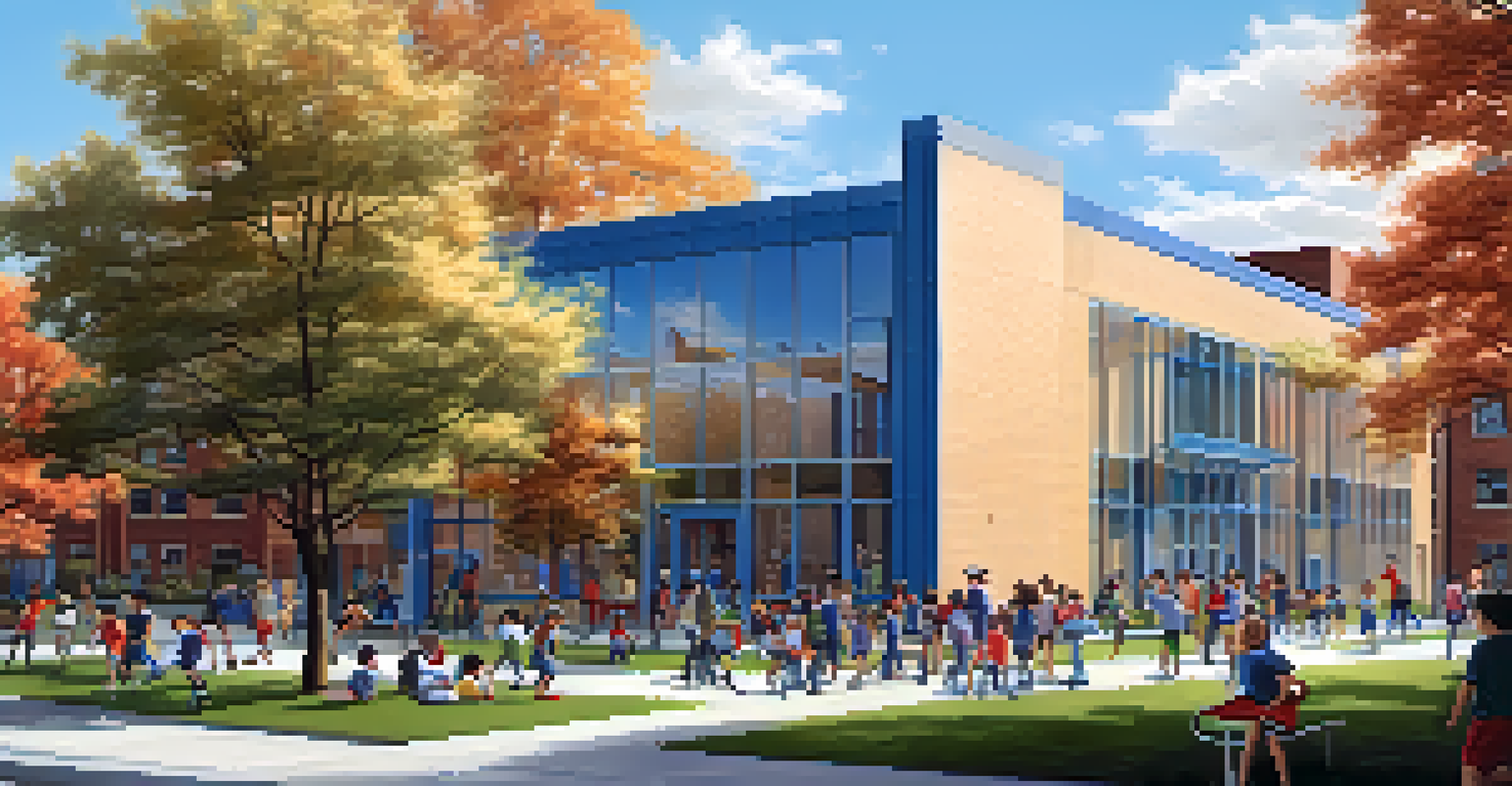Understanding the Impact of Charter Schools in NYC's Education

What Are Charter Schools and How Do They Work?
Charter schools are publicly funded schools that operate independently from the traditional public school system. They are created by a charter, which is a performance contract detailing the school’s mission, program, students served, and methods of assessment. This autonomy allows charter schools to implement innovative teaching methods and curriculums tailored to their student populations.
Charter schools are not just a different type of school; they are a different way of thinking about education.
In New York City, charter schools have gained significant traction since their inception in the late 1990s. They often emphasize academic achievement and accountability, with strict performance metrics that they must meet to continue receiving funding. This competitive environment can lead to improved educational outcomes, not just for charter school students but also for those in traditional public schools.
However, the rise of charter schools has sparked discussions around educational equity and access. Critics argue that they can divert resources away from neighborhood public schools, impacting their ability to serve students effectively. Understanding these dynamics is crucial to grasping the overall impact of charter schools in NYC.
The Growth of Charter Schools in NYC: A Brief Overview
Since the first charter school opened its doors in NYC, the number has surged dramatically. As of the 2022-2023 school year, there are over 200 charter schools serving more than 130,000 students across the city. This growth reflects a demand for alternative educational options among families seeking a different approach to learning.

Many charter schools have focused on underserved communities, aiming to provide quality education where it is most needed. For example, schools like Success Academy and KIPP NYC have made headlines for their impressive student performance and college readiness rates. These institutions have become models for what charter schools can achieve when they emphasize high academic standards.
Charter Schools Offer Independence
Charter schools operate independently from traditional public schools, allowing for innovative teaching methods tailored to their specific student populations.
However, the expansion of charter schools has not been without controversy. The debate often centers around funding disparities and the potential impact on traditional public schools, which may struggle to compete for resources. These tensions highlight the complexities of educational reform in a city as diverse as New York.
Academic Performance: Charter Schools vs. Traditional Schools
One of the primary arguments in favor of charter schools is their ability to improve academic performance. Studies have shown that certain charter schools in NYC outperform traditional public schools, particularly in subjects like math and reading. This trend can be attributed to factors such as smaller class sizes, a focus on accountability, and innovative teaching methods.
Education is the most powerful weapon which you can use to change the world.
For instance, Success Academy has gained attention for its impressive test scores and graduation rates. Their curriculum often includes a strong emphasis on critical thinking and problem-solving, equipping students with skills that go beyond rote memorization. This approach has led many parents to view charter schools as a viable option for their children's education.
Nevertheless, not all charter schools achieve the same level of success. Some struggle with student retention and face challenges in maintaining their academic standards. This variability underscores the importance of evaluating each school on an individual basis rather than making blanket assumptions about the charter school model.
The Role of Parental Choice in Education
Parental choice is a significant aspect of the charter school movement. Charter schools often provide families with options beyond their local public schools, allowing parents to choose the best educational fit for their children. This empowerment can lead to higher satisfaction among parents and students alike, fostering a sense of community involvement in the educational process.
In many cases, parents actively participate in the decision-making processes of charter schools, influencing everything from curriculum choices to school governance. This engagement can create a stronger school culture and promote accountability, as parents have a vested interest in the success of the school. Moreover, it encourages schools to be responsive to the needs and preferences of their communities.
Parental Choice Empowers Families
The charter school movement emphasizes parental choice, giving families the ability to select educational options that best fit their children's needs.
However, the emphasis on parental choice also raises questions about equity. Families with more resources may have greater access to information and options, potentially leading to disparities in educational opportunities. Ensuring that all families can make informed choices remains a challenge in the ongoing discussions about the role of charter schools in NYC.
Challenges Faced by Charter Schools in NYC
Despite their successes, charter schools in NYC face numerous challenges. Funding remains a critical issue, as many charter schools operate on tighter budgets compared to traditional public schools. This financial strain can impact resources, teacher salaries, and overall educational quality, raising concerns about sustainability in the long term.
Additionally, the political landscape surrounding charter schools can be contentious. Policy changes at the city or state level may affect funding, regulations, and the overall viability of charter schools. These fluctuations can create uncertainty for families considering charter options and for the schools themselves as they plan for the future.
Moreover, issues related to student enrollment and retention can complicate matters. Charter schools often compete for students, which can lead to challenges in maintaining diverse and inclusive environments. Addressing these challenges is crucial for ensuring that charter schools can continue to provide quality education to all students.
The Impact on Traditional Public Schools
The rise of charter schools has undeniably impacted traditional public schools in NYC. Some argue that the competition created by charter schools pushes public schools to improve their offerings, leading to better educational outcomes across the board. This competitive spirit can foster innovation and drive schools to adopt new teaching methods and curriculums.
On the flip side, the influx of charter schools can strain resources for traditional schools. As students leave for charter options, public schools may face declining enrollment, which directly affects funding and the availability of programs. This situation can create a cycle of underperformance that is difficult to break, particularly in underfunded areas.
Funding Challenges Persist
Many charter schools face financial strain and funding disparities compared to traditional public schools, raising concerns about sustainability and educational quality.
Ultimately, the interaction between charter schools and traditional public schools presents a complex picture that requires ongoing analysis. Finding a balance that benefits all students—regardless of the type of school they attend—is essential for the future of education in NYC.
Looking Ahead: The Future of Charter Schools in NYC
As we look to the future, the role of charter schools in NYC's education system remains a topic of significant discussion. With ongoing debates about funding, policy, and educational equity, the landscape is likely to continue evolving. Stakeholders, including parents, educators, and policymakers, must work together to navigate these changes effectively.
Emerging trends, such as the integration of technology in the classroom and a growing emphasis on social-emotional learning, may also shape the direction of charter schools. These innovations have the potential to enhance student engagement and foster a more holistic approach to education, aligning with the needs of today’s learners.

Ultimately, the future of charter schools in NYC will hinge on their ability to adapt and respond to the diverse needs of their communities. By prioritizing collaboration and inclusivity, charter schools can play a vital role in enriching the educational landscape for all students in the city.